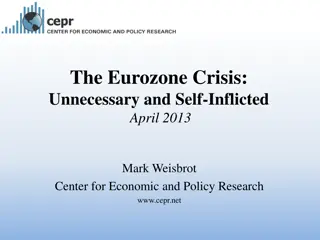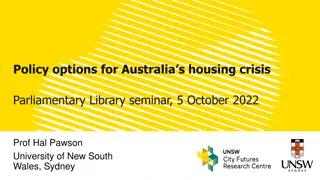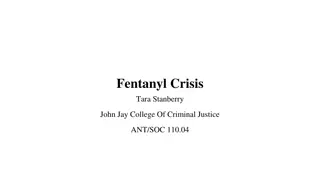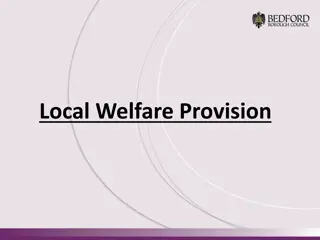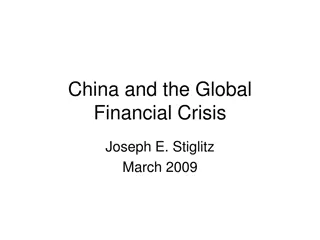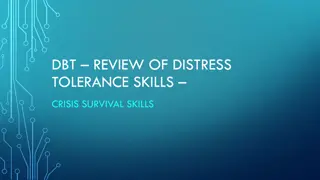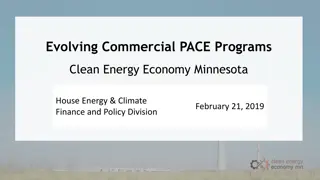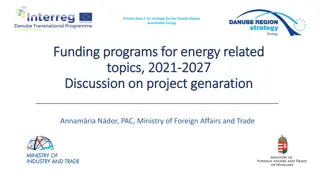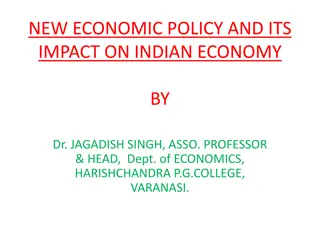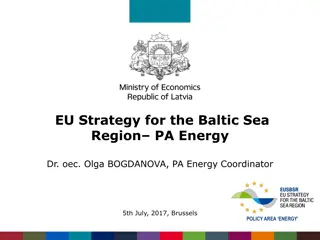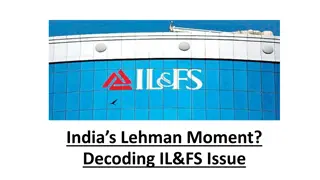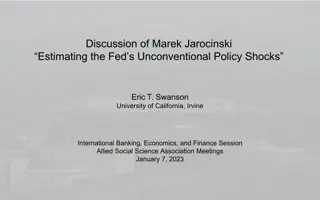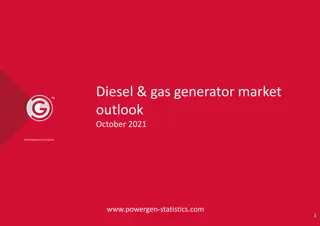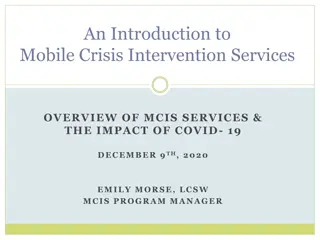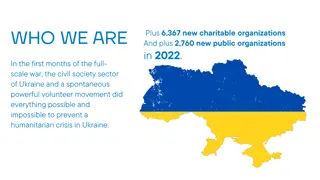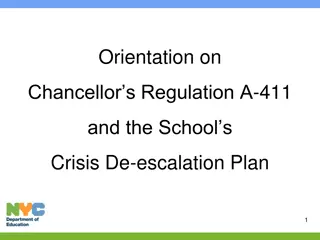Insights on EU Energy Policy and Market Design from the 2021-23 Energy Crisis
The 2021-23 Energy Crisis in the EU shed light on the impact of historically high wholesale natural gas and carbon prices, leading to elevated electricity prices. Lessons include the need for integration of national wholesale markets, addressing free-riding, and promoting active demand participation in retail electricity markets.
Download Presentation

Please find below an Image/Link to download the presentation.
The content on the website is provided AS IS for your information and personal use only. It may not be sold, licensed, or shared on other websites without obtaining consent from the author. Download presentation by click this link. If you encounter any issues during the download, it is possible that the publisher has removed the file from their server.
E N D
Presentation Transcript
EU Energy Policy Lessons from the 2021-23 Energy Crisis Michael G. Pollitt Cambridge Judge Business School and Centre on Regulation in Europe 17 May 2024 www.eprg.group.cam.ac.uk
Wholesale natural gas prices reached historically unprecedented levels, have come down Euro per MWh 2019 = c.28 peak 2024 = c.32 Euro HICP = +21% since 2019 2 www.eprg.group.cam.ac.uk
Carbon prices were at historic highs! Finally!! Price per tonne CO2 Euro HICP: +51% since 2005 +40 Euros / tonne Since 2019 = +16 Euro / MWh from CCGT 3 www.eprg.group.cam.ac.uk
Wholesale electricity prices were at historically high levels but remain elevated due to carbon price Euro per MWh 2019 = c.54 peak 2024 = c.82 i.e. 66 (excluding carbon price effect) Euro HICP: + 21% since 2019 Power price elevated by carbon price. Back to 2019 levels adjusting for price of carbon. 4 www.eprg.group.cam.ac.uk
Wholesale market design principles In the EU, there has been impressive integration of national wholesale markets into a single market platform. The theory of well-functioning markets involves paying the same price for identical units of consumption in real time. One ongoing issue with any wide area single market is free-riding on the capacity provision of others. Wholesale markets might require the least adaption to zero marginal cost renewables when gas plus carbon prices are high, as seen in the European energy crisis. 6 www.eprg.group.cam.ac.uk
Retail market design principles Retail electricity markets were a work in progress before the energy crisis. Prior to 2021, around half of EU countries still had regulated residential prices, which offered a capped price to these customers based on a benchmark formula of expected retailer costs. Retailers are often selling power at a fixed price for a fixed period and can be considered as selling a bundle of products: electrical energy and a financial hedge limiting the impact of real-time power prices on consumers Before the crisis, a key issue in retail markets was how to encourage a more active demand side whereby smaller consumers would be encouraged to invest in their generation, storage ( prosumagers ) and active demand response in the face of the increasing importance of intermittent renewables. 7 www.eprg.group.cam.ac.uk
Excess profits in the electricity system Wholesale and retail electricity markets are heavily regulated because of worries about companies' ability to gain excess profits. While excess profitability issues do exist in electricity markets, there is a general backdrop of the additional subsidised renewables gradually reducing the profitability of fossil fuel generators and active switching and price regulation limiting retailers' profitability. Assuming that the crisis created opportunities for excess profits, the issue is how to (re-)capture them to benefit consumers/citizens. Economic theory says the best way to do this is by directly taxing excess profits. 8 www.eprg.group.cam.ac.uk
Renewable support schemes and positional rents Renewable support and carbon pricing mechanisms raise excess profitability issues. Renewable support design has traditionally been about offering higher support prices to renewables than the market price. The preferred support mechanism for renewables in Europe is now a procurement auction, which locks in a price for a fixed period. Retail tariff models can help stabilise bills by allocating the benefits (and costs) of CfD contracts among consumers or specific consumer groups. The crisis has raised important issues as to whether low-carbon generation, which is beyond its initial subsidised fixed price period, should be allowed to earn fossil fuel price-related rents. 9 www.eprg.group.cam.ac.uk
Emergency intervention principles According to optimal taxation theory, consumer support in the face of a price shock is best administered through the regular tax and welfare system. However, other considerations suggest price interventions are likely when bills rise significantly. However, there are some important principles in intervening directly in energy bills: First, support should be exceptional and temporary. Second, at least for EU member states, price interventions need to be harmonised when they affect energy-related trade. Third, the same welfare effect can be achieved with less cost and more demand response if energy prices remain cost-reflective at the margin. 10 www.eprg.group.cam.ac.uk
Further Reading Pollitt, M. (2019), The Single Market in Electricity: An Economic Assessment , Review of Industrial Organization, 55(1): 89-109. Pollitt, M.G., von der Fehr, N-H., Willems, B., Banet, C., Le Coq, C. and Chyong, C.K. (2024), Recommendations for a Future-Proof Electricity Market Design in Europe in the light of the 2021-23 energy crisis , Energy Policy, 188 (May): 114051. Pollitt, M.G., von der Fehr, N-H, Willems, B,, Banet, C., Le Coq, C., Navia, D., and Bennato, A.R. (2022), Recommendations for a Future Proof Electricity Market Design, Centre on Regulation in content/uploads/2022/12/CERRE_MarketDesign_Final.pdf Europe. https://cerre.eu/wp- Pollitt, M.G. (2022), The Energy Market in Time of War, September 7, 2022, Centre on Regulation in Europe. https://cerre.eu/wp-content/uploads/2022/09/The-War- Economy-and-Energy-CERRE_edited-TC_2AM-PDF.pdf 11 www.eprg.group.cam.ac.uk



